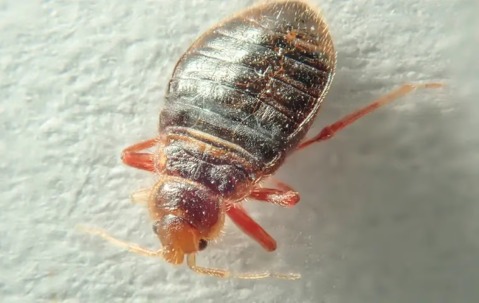How Long Can Bed Bugs Live in Sealed Plastic?
Bed bugs are a big problem in South Florida and are tough to beat. But have you ever thought about trapping them in plastic bags? Well, this article addresses that very question. We’ll also explore bed bug characteristics, the use of sealed plastic for control, factors impacting their survival, and practical strategies for comprehensive pest management.
Key Takeaways
- Bed bugs are small, light brown, nocturnal insects that can live for several months in ideal conditions.
- Sealed plastic bags can control bed bugs, isolate laundry and non-washables, and protect luggage.
- Bed bug survival in plastic depends on temperature, humidity, oxygen levels, and the quality and thickness of the plastic.
- Combining professional treatments (heat, chemicals) with home methods (vacuuming, steam cleaning) and proper item sealing and storage is critical to becoming bed bug-free.
Can Bed Bugs Live in Sealed Plastic?
The short answer is no. Sealing bed bugs in plastic is a commonly used strategy in the fight against these pests. This method involves trapping bed bugs in a plastic “prison,” isolating them, and cutting off their access to food, which is crucial for their survival and reproduction.
Here are some examples of how it’s typically done:
- Laundry Precaution: Before washing infested bedding and clothing, seal them in plastic garbage bags to prevent the spread of bed bugs to other parts of your home. Use high heat in your washing machine to kill bed bugs optimally.
- Item Quarantine: For items that can’t be washed easily, like books or electronics, sealing them in plastic bags or containers is a practical approach, especially in managing big bed bug infestations.
- Travel Protection: To prevent bed bugs from hitchhiking into your home from travels, it’s wise to seal your travel clothes and luggage in plastic until they can be thoroughly cleaned.
Factors That Impact Bed Bug Survival in Plastic
Sealing bed bugs in plastic might sound like a great solution. However, several factors come into play that determine just how effective this strategy is. Let’s break down the elements that can influence the survival of bed bugs when they’re trapped in a plastic environment:
.2403280800550.png)
Basically, it’s not just about trapping them. It’s also about creating conditions within a trap that are inhospitable enough to reduce or eliminate bed bugs altogether. This might sound excessive, but bed bugs are many people’s number one pest problem.
Effective Pest Control Strategies
While sealing bed bugs in plastic is a useful tactic, it’s often just one part of a broader plan against these pests. Combining professional methods and home remediation techniques is usually the most effective approach to gaining the upper hand:
Professional Pest Control Methods
.2403280802550.png)
Home Remediation Techniques
- Vacuuming: Using a vacuum cleaner, focus on mattresses and other common hiding spots. Proper disposal of vacuum bags in sealed plastic is vital.
- Steam Cleaning: This method applies direct heat to items like mattresses and furniture, killing bed bugs on contact.
By integrating these professional and DIY methods, you enhance your ability to tackle visible bed bugs and those hidden away, ensuring a more thorough eradication.
Practical Tips for Dealing with Infested Items
When you’re up against bed bugs, how you handle infested items can make a big difference in controlling the spread. Here are some practical tips to help you manage infested belongings effectively.
Use Plastic Bags to Isolate Infested Items
- Seal Infested Items: Promptly encase suspected items in heavy-duty plastic or trash bags. This prevents the bugs from spreading to uninfested areas.
- Label and Isolate: Mark these bags as infested and keep them separate from clean items, ideally in a garage or storage unit.
- Duration: Given bed bugs’ longevity without food, keep items sealed for several months, adjusting the length of time based on infestation severity and environmental factors.
Clean and Store Belongings to Prevent Spread
- Launder: Use the highest heat settings for washing and drying infested clothing and bedding, as bed bugs can’t withstand temperatures above 120°F.
- Treating Non-Washables: Utilize a steam cleaner for items like mattresses and furniture, or freeze items below 0°F for at least four days.
- Secure Storage: Post-cleaning, store items in new, uninfested plastic bags or containers to prevent re-infestation.
Frequently Asked Questions
Can Bed Bugs Chew Through Plastic Bags?
No, bed bugs cannot chew through plastic. Strong, sealed plastic bags without any openings are effective in containing them.
How Long Should Items Stay Sealed in Plastic?
Items should remain sealed for several months, as bed bugs can survive surprisingly long periods without feeding. The necessary duration varies with temperature and bag quality.
Are Certain Plastic Bags Better for Containing Bed Bugs?
Thicker, heavy-duty plastic bags are more effective due to their durability and seal ability. Vacuum-seal bags are also beneficial, particularly for clothing and linens.
What to Do with Plastic Bags After Bed Bug Control?
Seal these bags tightly and toss them in an outdoor trash bin to prevent any remaining bed bugs from entering your home.
Can Plastic Bags Be the Sole Method for Bed Bug Control?
Plastic bags should be part of a broader strategy, not the only method. Combine with heat treatments, steam cleaning, or professional pest control for complete eradication.
Is Vacuum-Sealing Infested Items Safe?
Yes, vacuum-sealing is effective for isolating infested items. It creates a tighter seal, reducing bed bug survival chances.
Can Plastic Bags Protect Luggage from Bed Bugs While Traveling?
Yes, using plastic bags to encase luggage, especially in hotels, is a proactive measure to prevent bed bugs from hitchhiking home with you.
